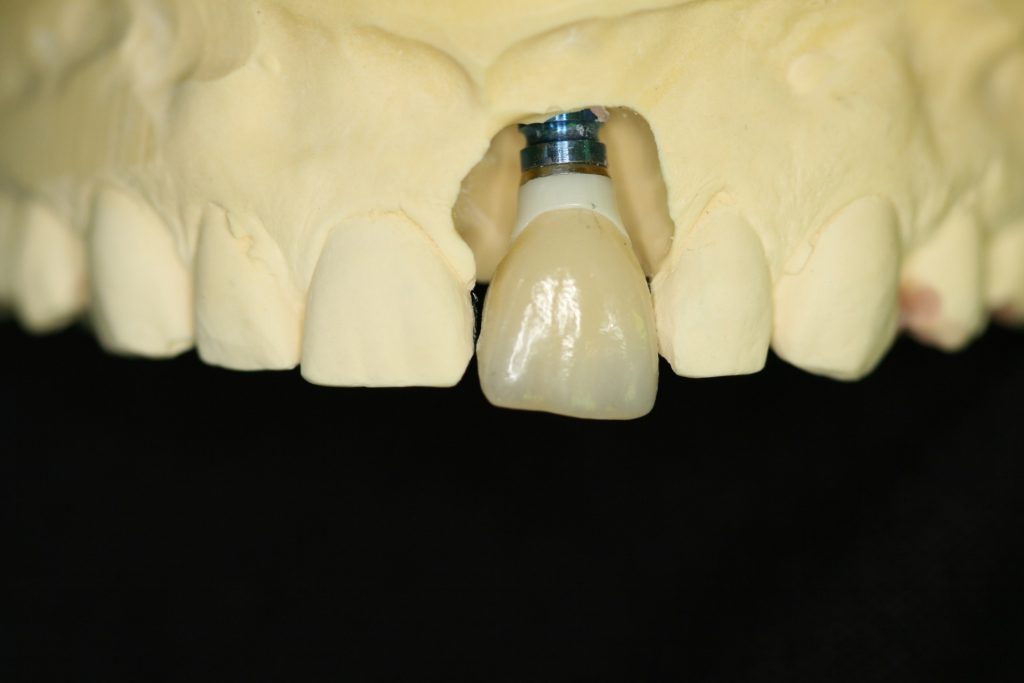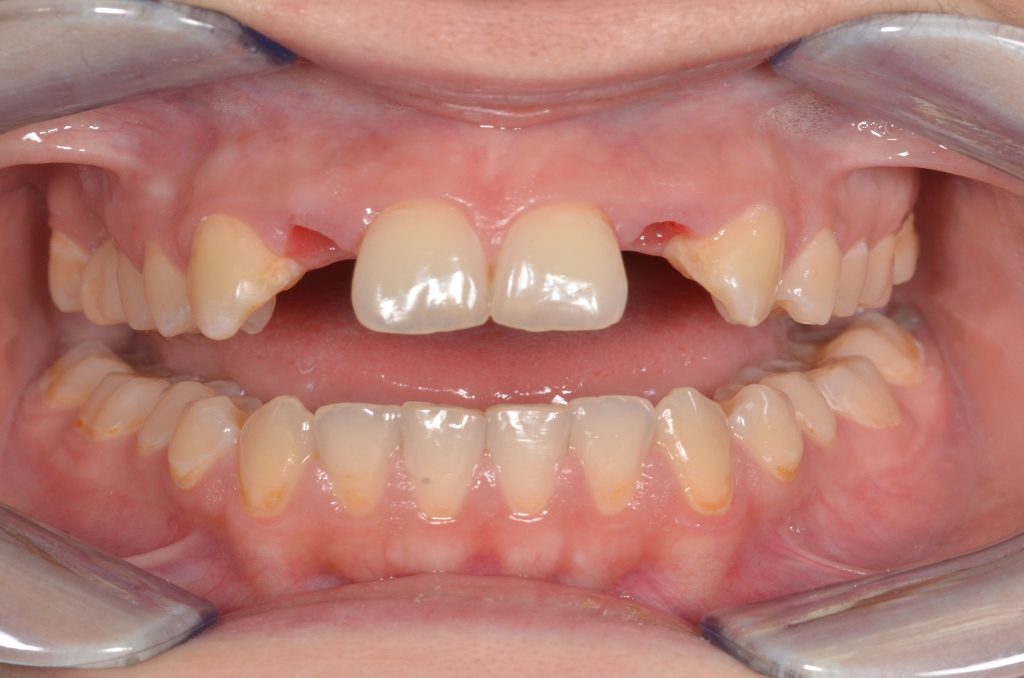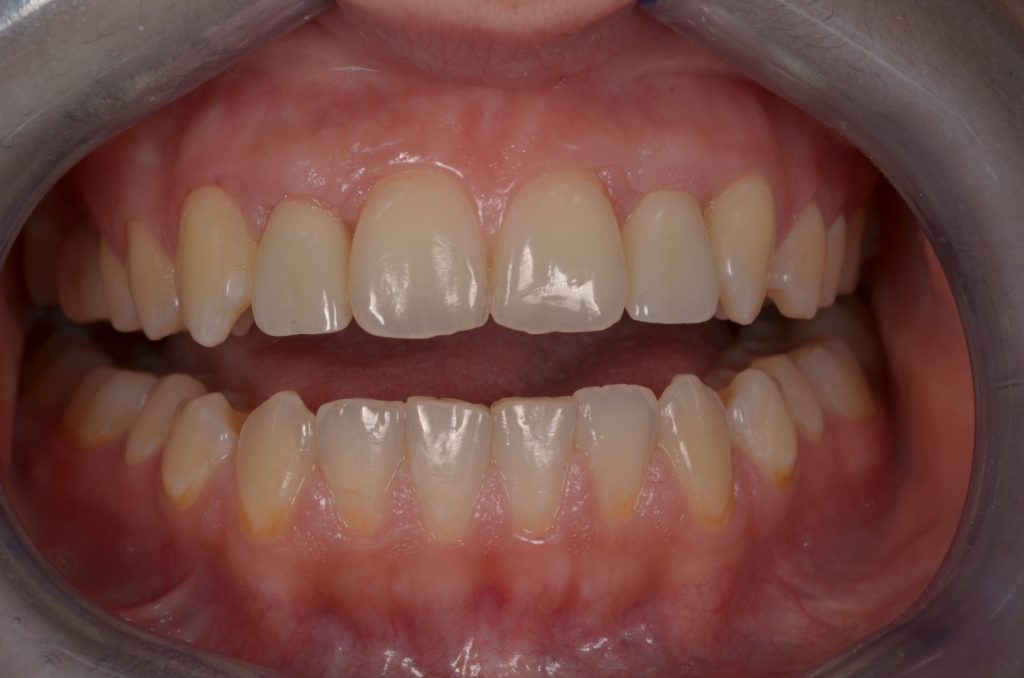Ceramic Restorations

Ceramic Veneer
Ceramic veneer is a permanent prosthetic dental restoration that covers a tooth from the labial surface creating a sort of thin shell.
The indications for the use of veneer are a discolored tooth, fractured tooth, unfavorable change of the shape of a tooth, as well as the need to close a diastema between teeth. The use of veneers is an irreversible process, because in most cases it requires shaving the tooth, but the amount of tooth to be removed during shaving is only up to 15%. In some cases, however, shaving the tooth is unnecessary prior to applying veneers. In the latter case, the veneer prepared in the laboratory is cemented to the tooth in order to improve its shape. Veneers are usually applied to the front teeth, i.e. the incisors and canines.
All-ceramic Crown
The advantage of all-ceramic crowns is that they blend in better in terms of color with the rest of patient’s teeth as compared to porcelain fused to metal crowns. All-ceramic crowns don’t have the gray metal foundation under the highly translucent ceramics. These types of crowns are an excellent alternative for patients with recognized allergies to certain substances; there is no allergic reaction after their application. Compared to other types of crowns, all-ceramic crowns can also be made using CAD/CAM technology, which enables very high precision and accuracy in construction. In the case of all-ceramic crowns, it is possible to use the foundation made of one kind of ceramic, on which a different type of ceramic is then applied. In this case, however, just as with porcelain fused to metal crowns, there is a greater chance for fracture or chipping. Another way of creating all-ceramic crowns in the laboratory is to prepare them in the shape and size of natural teeth, and then give the teeth their individual characteristics through the use of dyeing technology. All-ceramic crowns can be made of the following materials: zirconium oxide, aluminum oxide, lithium disilicate (E-max), feldspar ceramics, and glass-infiltrated ceramics.


